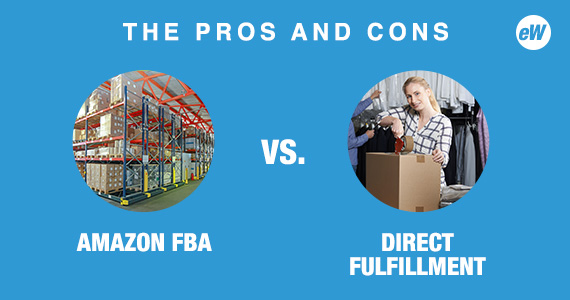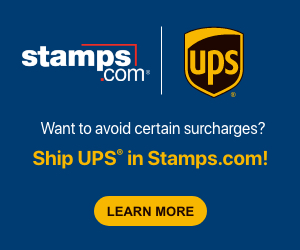 When you sell on Amazon, you’re faced with the choice of whether to ship via Fulfillment by Amazon (FBA) or directly. With FBA, you pay Amazon a monthly fee to store your products in the marketplace’s fulfillment centers, plus to have Amazon receive, fulfill and ship the item. Otherwise, you may fulfill and ship from your own home, business or non-Amazon warehouse. Both methods have their pros and cons; here’s a glance at the basics.
When you sell on Amazon, you’re faced with the choice of whether to ship via Fulfillment by Amazon (FBA) or directly. With FBA, you pay Amazon a monthly fee to store your products in the marketplace’s fulfillment centers, plus to have Amazon receive, fulfill and ship the item. Otherwise, you may fulfill and ship from your own home, business or non-Amazon warehouse. Both methods have their pros and cons; here’s a glance at the basics.
FBA Pros:
- Amazon’s well-known shipping tiers, including Prime. Many Amazon customers, particularly those with Amazon Prime benefits, specifically seek out Amazon shipping, both for price and speed.
- Customer confidence. FBA can have the effect of providing an extra sense of security to customers, who understand and appreciate Amazon’s customer service policies.
FBA Cons:
- It’s pricey for the seller. Amazon’s monthly fee holds a lot of value, but it may be too costly for some e-commerce business owners. Consider too how long your products may sit in a warehouse before selling, upping those monthly storage fees even more.
- Sometimes it’s pricey for the buyer, too. While many Amazon users seek out FBA, others may be looking for the best overall deal and pass over the FBA items in favor of lower-cost alternatives with more flexible shipping options.
Direct Fulfillment Pros:
- Quality control. While Amazon is known for its familiar packaging, if you have specific shipping concerns, such as for fragile or edible items, it may be advantageous for you to manage fulfillment on your own.
- No fungible items. Under the FBA option, Amazon has the right to swap fungible items – new products in original packaging with exactly the same colors and features – among sellers in order to fulfill orders more quickly. While Amazon then is required to replace the item, as an FBA seller you run a risk of not knowing exactly what’s in your inventory.
Direct Fulfillment Cons:
- More legwork for the seller. Particularly for new sellers, FBA makes it easy to get used to the selling process without the hassle of fulfillment and shipping yourself. Fulfilling directly may save you money, but you’ll need to weigh the cost of your time and energy, too.
- Lower rank in Amazon searches. If multiple sellers offer the same product, Amazon automatically puts FBA search results higher up.
The Bottom Line
Amazon gives its sellers lots of options, and sometimes it’s tricky wading through your choices. Knowing the basics of FBA vs. direct fulfillment can help as you evaluate the methods that work best for you, your buyers and your profit margins.






